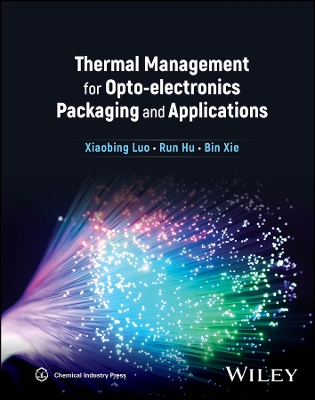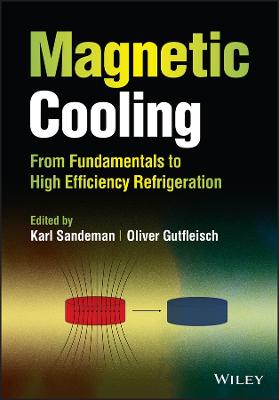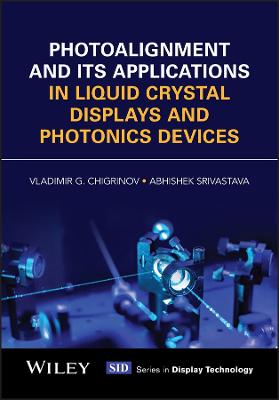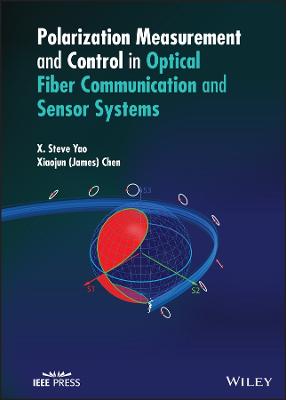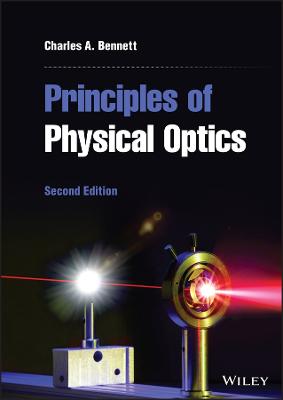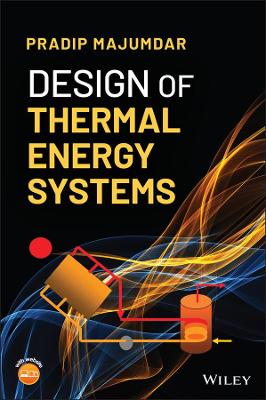Monte Carlo Ray-Trace Method in Radiation Heat Transfer and Applied Optics
 -15%
portes grátis
-15%
portes grátis
Monte Carlo Ray-Trace Method in Radiation Heat Transfer and Applied Optics
Mahan, J. Robert
John Wiley & Sons Inc
02/2019
280
Dura
Inglês
9781119518518
15 a 20 dias
468
Descrição não disponível.
Series Preface xi
Preface xiii
Acknowledgments xvii
About the Companion Website xix
1 Fundamentals of Ray Tracing 1
1.1 Rays and Ray Segments 1
1.2 The Enclosure 2
1.3 Mathematical Preliminaries 2
1.4 Ideal Models for Emission, Reflection, and Absorption of Rays 11
1.5 Scattering and Refraction 17
1.6 Meshing and Indexing 18
Problems 21
Reference 28
2 Fundamentals of Thermal Radiation 29
2.1 Thermal Radiation 29
2.2 Terminology 31
2.3 Intensity of Radiation (Radiance) 32
2.4 Directional Spectral Emissive Power 34
2.5 Hemispherical Spectral Emissive Power 34
2.6 Hemispherical Total Emissive Power 34
2.7 The Blackbody Radiation Distribution Function 35
2.8 Blackbody Properties 38
2.9 Emission and Absorption Mechanisms 40
2.10 Definition of Models for Emission, Absorption, and Reflection 42
2.11 Introduction to the Radiation Behavior of Surfaces 52
2.12 Radiation Behavior of Surfaces Composed of Electrical Non-Conductors (Dielectrics) 54
2.13 Radiation Behavior of Surfaces Composed of Electrical Conductors (Metals) 59
Problems 61
References 65
3 The Radiation Distribution Factor for Diffuse-Specular Gray Surfaces 67
3.1 The Monte Carlo Ray-Trace (MCRT) Method and the Radiation Distribution Factor 67
3.2 Properties of the Total Radiation Distribution Factor 68
3.3 Estimation of the Distribution Factor Matrix Using the MCRT Method 69
3.4 Binning of Rays on a Surface Element; Illustrative Example 83
3.5 Case Study: Thermal and Optical Analysis of a Radiometric Instrument 85
3.6 Use of Radiation Distribution Factors for the Case of Specified Surface Temperatures 94
3.7 Use of Radiation Distribution Factors When Some Surface Net Heat Fluxes Are Specified 96
Problems 97
Reference 101
4 Extension of the MCRT Method to Non-Diffuse, Non-Gray Enclosures 103
4.1 Bidirectional Spectral Surfaces 103
4.2 Principles Underlying a Practical Bidirectional Reflection Model 106
4.3 First Example: A Highly Absorptive Surface Whose Reflectivity is Strongly Specular 109
4.4 Second Example: A Highly Reflective Surface Whose Reflectivity is Strongly Diffuse 119
4.5 The Band-Averaged Spectral Radiation Distribution Factor 127
4.6 Use of the Band-Averaged Spectral Radiation Distribution Factor for the Case of Specified Surface Temperatures 133
4.7 Use of the Band-Averaged Spectral Radiation Distribution Factor for the Case of One or More Specified Surface Net Heat Fluxes 134
Problems 138
References 142
5 The MCRT Method for Participating Media 143
5.1 Radiation in a Participating Medium 143
5.2 Example: The Absorption Filter 146
5.3 Ray Tracing in a Participating Medium 154
5.4 Estimating the Radiation Distribution Factors in Participating Media 171
5.5 Using the Radiation Distribution Factors When All Temperatures are Specified 172
5.6 Using the Radiation Distribution Factors for a Mixture of Specified Temperatures and Specified Heat Transfer Rates 173
5.7 Simulating Infrared Images 175
Problems 178
References 179
6 Extension of the MCRT Method to Physical Optics 183
6.1 Some Ideas from Physical Optics 183
6.2 Geometrical Versus Physical Optics 185
6.3 Anatomy of a Ray Suitable for Physical Optics Applications 186
6.4 Modeling of Polarization Effects: A Case Study 187
6.5 Diffraction and Interference Effects: A Case Study 195
6.6 Monte Carlo Ray-Trace Diffraction Based on the Huygens-Fresnel Principle 198
Problems 209
References 210
7 Statistical Estimation of Uncertainty in the MCRT Method 213
7.1 Statement of the Problem 213
7.2 Statistical Inference 214
7.3 Hypothesis Testing for Population Means 218
7.4 Confidence Intervals for Population Proportions 220
7.5 Effects of Uncertainties in the Enclosure Geometry and Surface Models 224
7.6 Single-Sample versus Multiple-Sample Experiments 225
7.7 Evaluation of Aggravated Uncertainty 226
7.8 Uncertainty in Temperature and Heat Transfer Results 227
7.9 Application to the Case of Specified Surface Temperatures 229
7.10 Experimental Design of MCRT Algorithms 232
Problems 237
References 239
A Random Number Generators and Autoregression Analysis 241
A.1 Pseudo-Random Number Generators 242
A.2 Properties of a "Good" Pseudo-Random Number Generator 242
A.3 A "Minimal Standard" Pseudo-Random Number Generator 245
A.4 Autoregression Analysis 247
Problems 253
References 254
Index 255
Preface xiii
Acknowledgments xvii
About the Companion Website xix
1 Fundamentals of Ray Tracing 1
1.1 Rays and Ray Segments 1
1.2 The Enclosure 2
1.3 Mathematical Preliminaries 2
1.4 Ideal Models for Emission, Reflection, and Absorption of Rays 11
1.5 Scattering and Refraction 17
1.6 Meshing and Indexing 18
Problems 21
Reference 28
2 Fundamentals of Thermal Radiation 29
2.1 Thermal Radiation 29
2.2 Terminology 31
2.3 Intensity of Radiation (Radiance) 32
2.4 Directional Spectral Emissive Power 34
2.5 Hemispherical Spectral Emissive Power 34
2.6 Hemispherical Total Emissive Power 34
2.7 The Blackbody Radiation Distribution Function 35
2.8 Blackbody Properties 38
2.9 Emission and Absorption Mechanisms 40
2.10 Definition of Models for Emission, Absorption, and Reflection 42
2.11 Introduction to the Radiation Behavior of Surfaces 52
2.12 Radiation Behavior of Surfaces Composed of Electrical Non-Conductors (Dielectrics) 54
2.13 Radiation Behavior of Surfaces Composed of Electrical Conductors (Metals) 59
Problems 61
References 65
3 The Radiation Distribution Factor for Diffuse-Specular Gray Surfaces 67
3.1 The Monte Carlo Ray-Trace (MCRT) Method and the Radiation Distribution Factor 67
3.2 Properties of the Total Radiation Distribution Factor 68
3.3 Estimation of the Distribution Factor Matrix Using the MCRT Method 69
3.4 Binning of Rays on a Surface Element; Illustrative Example 83
3.5 Case Study: Thermal and Optical Analysis of a Radiometric Instrument 85
3.6 Use of Radiation Distribution Factors for the Case of Specified Surface Temperatures 94
3.7 Use of Radiation Distribution Factors When Some Surface Net Heat Fluxes Are Specified 96
Problems 97
Reference 101
4 Extension of the MCRT Method to Non-Diffuse, Non-Gray Enclosures 103
4.1 Bidirectional Spectral Surfaces 103
4.2 Principles Underlying a Practical Bidirectional Reflection Model 106
4.3 First Example: A Highly Absorptive Surface Whose Reflectivity is Strongly Specular 109
4.4 Second Example: A Highly Reflective Surface Whose Reflectivity is Strongly Diffuse 119
4.5 The Band-Averaged Spectral Radiation Distribution Factor 127
4.6 Use of the Band-Averaged Spectral Radiation Distribution Factor for the Case of Specified Surface Temperatures 133
4.7 Use of the Band-Averaged Spectral Radiation Distribution Factor for the Case of One or More Specified Surface Net Heat Fluxes 134
Problems 138
References 142
5 The MCRT Method for Participating Media 143
5.1 Radiation in a Participating Medium 143
5.2 Example: The Absorption Filter 146
5.3 Ray Tracing in a Participating Medium 154
5.4 Estimating the Radiation Distribution Factors in Participating Media 171
5.5 Using the Radiation Distribution Factors When All Temperatures are Specified 172
5.6 Using the Radiation Distribution Factors for a Mixture of Specified Temperatures and Specified Heat Transfer Rates 173
5.7 Simulating Infrared Images 175
Problems 178
References 179
6 Extension of the MCRT Method to Physical Optics 183
6.1 Some Ideas from Physical Optics 183
6.2 Geometrical Versus Physical Optics 185
6.3 Anatomy of a Ray Suitable for Physical Optics Applications 186
6.4 Modeling of Polarization Effects: A Case Study 187
6.5 Diffraction and Interference Effects: A Case Study 195
6.6 Monte Carlo Ray-Trace Diffraction Based on the Huygens-Fresnel Principle 198
Problems 209
References 210
7 Statistical Estimation of Uncertainty in the MCRT Method 213
7.1 Statement of the Problem 213
7.2 Statistical Inference 214
7.3 Hypothesis Testing for Population Means 218
7.4 Confidence Intervals for Population Proportions 220
7.5 Effects of Uncertainties in the Enclosure Geometry and Surface Models 224
7.6 Single-Sample versus Multiple-Sample Experiments 225
7.7 Evaluation of Aggravated Uncertainty 226
7.8 Uncertainty in Temperature and Heat Transfer Results 227
7.9 Application to the Case of Specified Surface Temperatures 229
7.10 Experimental Design of MCRT Algorithms 232
Problems 237
References 239
A Random Number Generators and Autoregression Analysis 241
A.1 Pseudo-Random Number Generators 242
A.2 Properties of a "Good" Pseudo-Random Number Generator 242
A.3 A "Minimal Standard" Pseudo-Random Number Generator 245
A.4 Autoregression Analysis 247
Problems 253
References 254
Index 255
Este título pertence ao(s) assunto(s) indicados(s). Para ver outros títulos clique no assunto desejado.
<p>A guide to the Monte Carlo Ray-Trace Method in Radiation Heat Transfer and Applied Optics; Understanding The Monte Carlo Ray-Trace Method in Radiation Heat Transfer and Applied Optics; text on The Monte Carlo Ray-Trace Method in Radiation Heat Transfer and Applied Optics; Resource to The Monte Carlo Ray-Trace Method in Radiation Heat Transfer and Applied Optics; ideal models for emission, reflection, and absorption in radiation heat transfer; fundamentals of thermal radiation; intensity of radiation; directional spectral emissive power; hemispherical total emissive power; blackbody radiation distribution function; radiation distribution factor for diffuse-specular exchange; binning of rays on a surface element; thermal and optical analysis of radiometric instruments</p>
Series Preface xi
Preface xiii
Acknowledgments xvii
About the Companion Website xix
1 Fundamentals of Ray Tracing 1
1.1 Rays and Ray Segments 1
1.2 The Enclosure 2
1.3 Mathematical Preliminaries 2
1.4 Ideal Models for Emission, Reflection, and Absorption of Rays 11
1.5 Scattering and Refraction 17
1.6 Meshing and Indexing 18
Problems 21
Reference 28
2 Fundamentals of Thermal Radiation 29
2.1 Thermal Radiation 29
2.2 Terminology 31
2.3 Intensity of Radiation (Radiance) 32
2.4 Directional Spectral Emissive Power 34
2.5 Hemispherical Spectral Emissive Power 34
2.6 Hemispherical Total Emissive Power 34
2.7 The Blackbody Radiation Distribution Function 35
2.8 Blackbody Properties 38
2.9 Emission and Absorption Mechanisms 40
2.10 Definition of Models for Emission, Absorption, and Reflection 42
2.11 Introduction to the Radiation Behavior of Surfaces 52
2.12 Radiation Behavior of Surfaces Composed of Electrical Non-Conductors (Dielectrics) 54
2.13 Radiation Behavior of Surfaces Composed of Electrical Conductors (Metals) 59
Problems 61
References 65
3 The Radiation Distribution Factor for Diffuse-Specular Gray Surfaces 67
3.1 The Monte Carlo Ray-Trace (MCRT) Method and the Radiation Distribution Factor 67
3.2 Properties of the Total Radiation Distribution Factor 68
3.3 Estimation of the Distribution Factor Matrix Using the MCRT Method 69
3.4 Binning of Rays on a Surface Element; Illustrative Example 83
3.5 Case Study: Thermal and Optical Analysis of a Radiometric Instrument 85
3.6 Use of Radiation Distribution Factors for the Case of Specified Surface Temperatures 94
3.7 Use of Radiation Distribution Factors When Some Surface Net Heat Fluxes Are Specified 96
Problems 97
Reference 101
4 Extension of the MCRT Method to Non-Diffuse, Non-Gray Enclosures 103
4.1 Bidirectional Spectral Surfaces 103
4.2 Principles Underlying a Practical Bidirectional Reflection Model 106
4.3 First Example: A Highly Absorptive Surface Whose Reflectivity is Strongly Specular 109
4.4 Second Example: A Highly Reflective Surface Whose Reflectivity is Strongly Diffuse 119
4.5 The Band-Averaged Spectral Radiation Distribution Factor 127
4.6 Use of the Band-Averaged Spectral Radiation Distribution Factor for the Case of Specified Surface Temperatures 133
4.7 Use of the Band-Averaged Spectral Radiation Distribution Factor for the Case of One or More Specified Surface Net Heat Fluxes 134
Problems 138
References 142
5 The MCRT Method for Participating Media 143
5.1 Radiation in a Participating Medium 143
5.2 Example: The Absorption Filter 146
5.3 Ray Tracing in a Participating Medium 154
5.4 Estimating the Radiation Distribution Factors in Participating Media 171
5.5 Using the Radiation Distribution Factors When All Temperatures are Specified 172
5.6 Using the Radiation Distribution Factors for a Mixture of Specified Temperatures and Specified Heat Transfer Rates 173
5.7 Simulating Infrared Images 175
Problems 178
References 179
6 Extension of the MCRT Method to Physical Optics 183
6.1 Some Ideas from Physical Optics 183
6.2 Geometrical Versus Physical Optics 185
6.3 Anatomy of a Ray Suitable for Physical Optics Applications 186
6.4 Modeling of Polarization Effects: A Case Study 187
6.5 Diffraction and Interference Effects: A Case Study 195
6.6 Monte Carlo Ray-Trace Diffraction Based on the Huygens-Fresnel Principle 198
Problems 209
References 210
7 Statistical Estimation of Uncertainty in the MCRT Method 213
7.1 Statement of the Problem 213
7.2 Statistical Inference 214
7.3 Hypothesis Testing for Population Means 218
7.4 Confidence Intervals for Population Proportions 220
7.5 Effects of Uncertainties in the Enclosure Geometry and Surface Models 224
7.6 Single-Sample versus Multiple-Sample Experiments 225
7.7 Evaluation of Aggravated Uncertainty 226
7.8 Uncertainty in Temperature and Heat Transfer Results 227
7.9 Application to the Case of Specified Surface Temperatures 229
7.10 Experimental Design of MCRT Algorithms 232
Problems 237
References 239
A Random Number Generators and Autoregression Analysis 241
A.1 Pseudo-Random Number Generators 242
A.2 Properties of a "Good" Pseudo-Random Number Generator 242
A.3 A "Minimal Standard" Pseudo-Random Number Generator 245
A.4 Autoregression Analysis 247
Problems 253
References 254
Index 255
Preface xiii
Acknowledgments xvii
About the Companion Website xix
1 Fundamentals of Ray Tracing 1
1.1 Rays and Ray Segments 1
1.2 The Enclosure 2
1.3 Mathematical Preliminaries 2
1.4 Ideal Models for Emission, Reflection, and Absorption of Rays 11
1.5 Scattering and Refraction 17
1.6 Meshing and Indexing 18
Problems 21
Reference 28
2 Fundamentals of Thermal Radiation 29
2.1 Thermal Radiation 29
2.2 Terminology 31
2.3 Intensity of Radiation (Radiance) 32
2.4 Directional Spectral Emissive Power 34
2.5 Hemispherical Spectral Emissive Power 34
2.6 Hemispherical Total Emissive Power 34
2.7 The Blackbody Radiation Distribution Function 35
2.8 Blackbody Properties 38
2.9 Emission and Absorption Mechanisms 40
2.10 Definition of Models for Emission, Absorption, and Reflection 42
2.11 Introduction to the Radiation Behavior of Surfaces 52
2.12 Radiation Behavior of Surfaces Composed of Electrical Non-Conductors (Dielectrics) 54
2.13 Radiation Behavior of Surfaces Composed of Electrical Conductors (Metals) 59
Problems 61
References 65
3 The Radiation Distribution Factor for Diffuse-Specular Gray Surfaces 67
3.1 The Monte Carlo Ray-Trace (MCRT) Method and the Radiation Distribution Factor 67
3.2 Properties of the Total Radiation Distribution Factor 68
3.3 Estimation of the Distribution Factor Matrix Using the MCRT Method 69
3.4 Binning of Rays on a Surface Element; Illustrative Example 83
3.5 Case Study: Thermal and Optical Analysis of a Radiometric Instrument 85
3.6 Use of Radiation Distribution Factors for the Case of Specified Surface Temperatures 94
3.7 Use of Radiation Distribution Factors When Some Surface Net Heat Fluxes Are Specified 96
Problems 97
Reference 101
4 Extension of the MCRT Method to Non-Diffuse, Non-Gray Enclosures 103
4.1 Bidirectional Spectral Surfaces 103
4.2 Principles Underlying a Practical Bidirectional Reflection Model 106
4.3 First Example: A Highly Absorptive Surface Whose Reflectivity is Strongly Specular 109
4.4 Second Example: A Highly Reflective Surface Whose Reflectivity is Strongly Diffuse 119
4.5 The Band-Averaged Spectral Radiation Distribution Factor 127
4.6 Use of the Band-Averaged Spectral Radiation Distribution Factor for the Case of Specified Surface Temperatures 133
4.7 Use of the Band-Averaged Spectral Radiation Distribution Factor for the Case of One or More Specified Surface Net Heat Fluxes 134
Problems 138
References 142
5 The MCRT Method for Participating Media 143
5.1 Radiation in a Participating Medium 143
5.2 Example: The Absorption Filter 146
5.3 Ray Tracing in a Participating Medium 154
5.4 Estimating the Radiation Distribution Factors in Participating Media 171
5.5 Using the Radiation Distribution Factors When All Temperatures are Specified 172
5.6 Using the Radiation Distribution Factors for a Mixture of Specified Temperatures and Specified Heat Transfer Rates 173
5.7 Simulating Infrared Images 175
Problems 178
References 179
6 Extension of the MCRT Method to Physical Optics 183
6.1 Some Ideas from Physical Optics 183
6.2 Geometrical Versus Physical Optics 185
6.3 Anatomy of a Ray Suitable for Physical Optics Applications 186
6.4 Modeling of Polarization Effects: A Case Study 187
6.5 Diffraction and Interference Effects: A Case Study 195
6.6 Monte Carlo Ray-Trace Diffraction Based on the Huygens-Fresnel Principle 198
Problems 209
References 210
7 Statistical Estimation of Uncertainty in the MCRT Method 213
7.1 Statement of the Problem 213
7.2 Statistical Inference 214
7.3 Hypothesis Testing for Population Means 218
7.4 Confidence Intervals for Population Proportions 220
7.5 Effects of Uncertainties in the Enclosure Geometry and Surface Models 224
7.6 Single-Sample versus Multiple-Sample Experiments 225
7.7 Evaluation of Aggravated Uncertainty 226
7.8 Uncertainty in Temperature and Heat Transfer Results 227
7.9 Application to the Case of Specified Surface Temperatures 229
7.10 Experimental Design of MCRT Algorithms 232
Problems 237
References 239
A Random Number Generators and Autoregression Analysis 241
A.1 Pseudo-Random Number Generators 242
A.2 Properties of a "Good" Pseudo-Random Number Generator 242
A.3 A "Minimal Standard" Pseudo-Random Number Generator 245
A.4 Autoregression Analysis 247
Problems 253
References 254
Index 255
Este título pertence ao(s) assunto(s) indicados(s). Para ver outros títulos clique no assunto desejado.
<p>A guide to the Monte Carlo Ray-Trace Method in Radiation Heat Transfer and Applied Optics; Understanding The Monte Carlo Ray-Trace Method in Radiation Heat Transfer and Applied Optics; text on The Monte Carlo Ray-Trace Method in Radiation Heat Transfer and Applied Optics; Resource to The Monte Carlo Ray-Trace Method in Radiation Heat Transfer and Applied Optics; ideal models for emission, reflection, and absorption in radiation heat transfer; fundamentals of thermal radiation; intensity of radiation; directional spectral emissive power; hemispherical total emissive power; blackbody radiation distribution function; radiation distribution factor for diffuse-specular exchange; binning of rays on a surface element; thermal and optical analysis of radiometric instruments</p>

